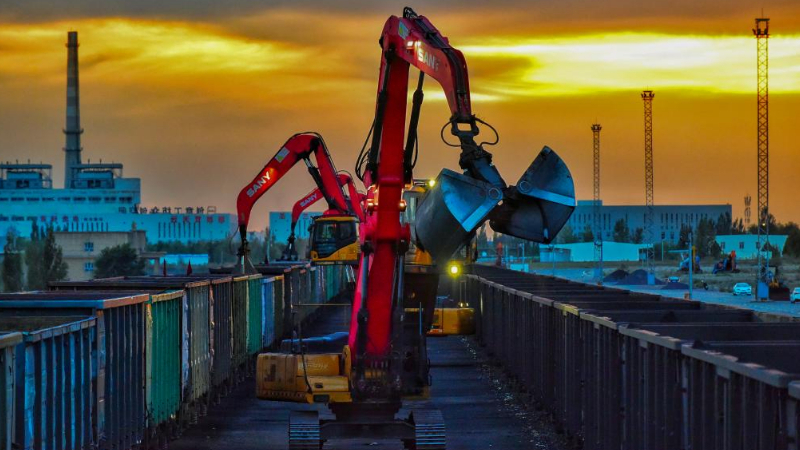
This simulated image captured at Beijing Aerospace Control Center on Nov. 12, 2022 shows China's cargo spacecraft Tianzhou-5 having conducted a fast automated rendezvous and docking with the combination of the space station Tiangong. (Photo by Sun Fengxiao/Xinhua)
BEIJING, Sept. 12 (Xinhua) -- China's Tianzhou-5 cargo craft re-entered the atmosphere in a controlled manner at 9:13 a.m. (Beijing Time) Tuesday, according to the China Manned Space Agency.
Most of the spacecraft's components burned up during the re-entry, and a small amount of its debris fell into the predetermined safe waters of the South Pacific.
The Tianzhou-5 separated from the orbiting Tiangong space station combination at 4:46 p.m. Monday and switched to independent flight.
Launched on Nov. 12, 2022 from the Wenchang Spacecraft Launch Site in the southern island province of Hainan, the Tianzhou-5 was loaded with propellants, materials for scientific experiments and supplies for taikonauts.

The Long March-7 Y6 rocket, carrying cargo spacecraft Tianzhou-5, blasts off from the Wenchang Spacecraft Launch Site in south China's Hainan Province Nov. 12, 2022.(Xinhua/Guo Cheng)
According to the agency, many application projects carried into space by the Tianzhou-5 are progressing smoothly and have achieved fruitful results. Among them is the Macao Student Science Satellite 1, which was stowed in the cargo craft before being released into orbit on Dec. 18, 2022.
This satellite is operating stably in orbit, functioning as a space-based scientific practice platform for amateur radio enthusiasts in the Guangdong-Hong Kong-Macao Greater Bay Area, on both sides of the Taiwan Strait and around the world. It has vigorously promoted the in-depth cooperation and exchanges between the Chinese mainland and Macao in space science popularization and education, the agency noted.

Photo taken on Jan. 1, 2022 shows college students participating in a space-Earth video talk with the Chinese astronauts on board space station Tiangong in south China's Macao. (Xinhua/Cheong Kam Ka)
The in-orbit test of space hydrogen-oxygen fuel cells is another experimental achievement onboard the Tianzhou-5, providing data and theoretical support for China's future manned lunar explorations.
Other key payloads include the space high-energy particle detection equipment, which completed an extravehicular mission.
At present, three batches of application projects have been carried by Tianzhou into space. The agency said future manned space missions will continue to open its cargo craft payloads to the public. ■












